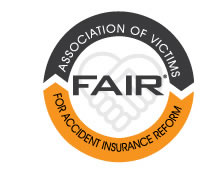Aviva relies on the evidence of its assessors set out above as well as on the Applicant’s achievements despite her impairments in successfully completing high school, in being accepted at two universities, in having several friends and extracurricular activities, and in her maintaining a close relationship with her family. I am not persuaded by Dr. Valentin’s reports or the others prepared by Centric Health Medical Assessments that the Applicant does not suffer a complete inability to carry on a normal life. I note that, despite the frequent references in the body of Dr. Valentin’s Psychology Report to the Applicant’s tearfulness and anxiety, Dr. Valentin’s conclusions on the non-earner benefits make not a single reference to the Adjustment Disorder with Anxiety which she diagnosed, but instead she included references to physical conditions (not psychological) and the Applicant’s use of Advil for headaches. Her observations of the Applicant’s emotional stress are consistent with the observations of the treating therapists made during the same time period as this assessment, as well as the evidence of the family and the Applicant. I find that the Applicant was well aware at least by Grade 11 that she could not process the information in class or in her self-study as quickly as her peers, and that she could not meet the expectations of her teachers and her parents as to the workload and speed that she could work at. I find that this caused her considerable stress and confusion, and the Adjustment Disorder and Anxiety diagnosed by Dr. Rathbone. More weight should have been given and further analysis provided regarding the interrelationship between her impairments and her activities.
[]
The Applicant’s trajectory of life, both in its path over the past five years and in its direction in the future, has been significantly altered, and it is not yet clear that the Applicant will have a successful university experience or work career. The opinions of Dr. Rathbone and Dr. Gates have been confirmed in the Applicant’s work experience since graduating from high school, and I prefer their evidence to that of Dr. Valentin. The accomplishments relied on by Aviva are only a cover that hides the significant impact on the functioning of this person, who struggles with the symptoms of Adjustment Disorder and Anxiety and the cognitive deficiencies identified by Dr. Gates and Dr. Rathbone.
[]
I am satisfied on the evidence that the denial of the non-earner benefits in November 2013 was not properly supported by the assessments relied on by Aviva, and that the Applicant did suffer a complete inability to lead a normal life as defined in her life. Her impairments are a significant restriction on her participation in the significant activities and relationships in her life. Throughout high school, the manner in which she participated in school and the quality of the performance, not just the grades she achieved, but the way she achieved those results, is such that she was substantially unable to live a normal life as defined by her pre-accident life. She required significant increases in time to accomplish tasks post-accident. She required significant support from her family, MM, and her therapists. Time constraints and supports were required that her trajectory would never have contemplated but for the accident. She has been left behind by her school friends. She contends with an Adjustment Disorder and Anxiety and cognitive deficiencies which are well-documented in the evidence.




